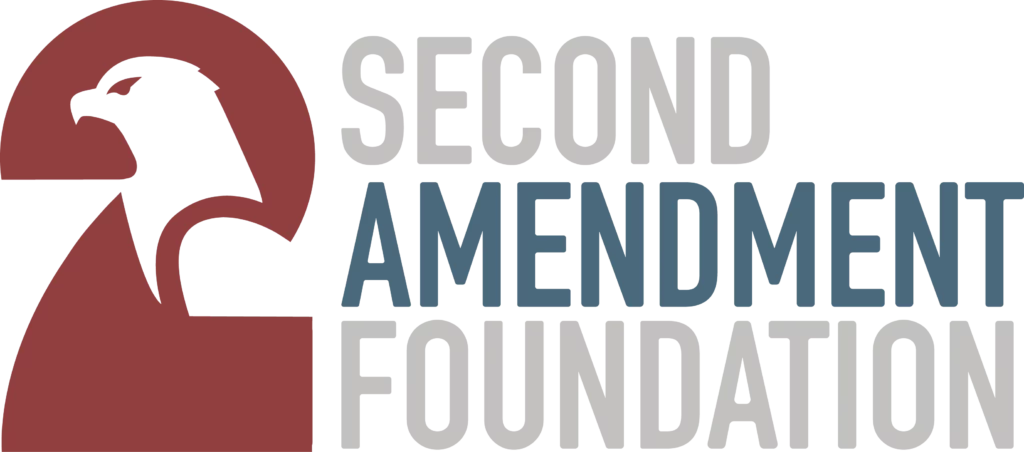By Joseph P. Tartaro, Second Amendment Foundation President
If you want to take your search for justice all the way to the US Supreme Court you’d better be prepared to pay the piper. And he’s very expensive. You’d also better hope and pray that the nine Supremes will even hear your case. They don’t take them all.
There have been many appeals for SCOTUS to hear important gun rights related cases since the 2008 Heller decision and the 2010 McDonald rulings but the high court has refused to hear them all until they granted certiorari in the New York State Rifle & Pistol Association’s (NYSRPA) challenge to New York City’s bizarre rules prohibiting duly licensed residents from transporting their handguns out of the city–even to their own property elsewhere.
This case is finally scheduled to be argued before the nine Supremes on Dec. 2, 2019. But as mentioned earlier, it takes a lot of time and expense to get a court review. In the NYSRPA case, it has been six years since the suit was first filed in federal district court. Since the case was first filed in 2013, the district circuit court upheld the city and so did the next judicial layer, the court of appeals.
Currently, pro-gun organizations and their lawyers have several other appeals in progress regarding our Second Amendment rights. Another handgun licensing case challenge from Maryland is just one such; other such appeals involve the laws of other states.
The Second Amendment Foundation and four other pro-gun organizations recently filed an amicus brief over the Maryland licensing statute that asks the high court to determine “to what extent the right to bear arms applies beyond the home,” because the question “has deeply divided lower courts.” The 27-page brief notes that the DC and Seventh Circuits held that the right applies just as strongly outside the home as inside the home, while the First and Second Circuits determined that the right likely applies outside the home, but in a weaker form. Meanwhile, the Third and Fourth Circuits declined to decide whether the right exists outside the home and the Ninth and Tenth Circuits held that the right to bear arms does not protect concealed carry.
And, of course, there is the money involved in the whole court appeals process. Litigation is expensive.
World Magazine in July 2011 noted breathlessly that “a big victory at the Supreme Court isn’t priceless, after all. It costs somewhere north of $1,144,602.64.”
That’s what the video game industry spent to convince the court that California’s law banning the sale or rental of violent video games to minors violated the First Amendment. And it asked the court to make the state pay the legal cost of the case. Federal law allows the prevailing parties in such cases to collect their costs from the losing side.
In early November, The Washington Post also focused on the high cost and long odds of winning your case in court.
The Post reported that Alaskan moose “hunter John Sturgeon serves as both inspiration and warning for anyone who has ever gotten worked up over a perceived injustice and vowed to fight it all the way to the Supreme Court.”
“An inspiration because Sturgeon took on the federal government and — not once but twice — beat the odds to get the high court to accept his case and rule in his favor. Why a warning? Because Sturgeon’s 12-year, only-in-Alaska battle to travel on a forbidden hovercraft through national parkland to his favorite hunting spot cost well north of $1.5 million.
“I had no idea how much it was going to cost, but you start down this slide and there’s no stopping it,” Sturgeon said. “Not many people could do what I did, because they don’t have the financial resources, which I don’t either. But I did have a cause that really ignited people.”
Some pro-hunting organizations and hundreds of ordinary Alaskans donated as did one very wealthy one.
The money covered things such as the $20,891.89 bill to print legal documents exactly as the Supreme Court requires. To reimburse the $11,063.25 in hotel costs for Sturgeon’s lawyers to hone their strategy at three moot courts in Washington. To pay for 3,691 hours of legal work at the law firms that have represented him since 2011.
The bad news: A legal fight like that could take six years or more, and maybe cost about $700,000.
Turns out Sturgeon has succeeded — he filled the freezer just a couple of weeks ago.
Lay persons might wonder about the high cost of litigation and express shock at $1,100 an hour fees, World Magazine mused, but given the going rate for Supreme Court work, as well as the video firms’ attorney Tom Goldstein’s track record and experience, his rate is eminently reasonable. You can’t get a better deal elsewhere:
For the sake of comparison in evaluating his hourly fee, Goldstein pointed to rates charged by other veteran Supreme Court advocates: $1,350 per hour for Paul Clement, others up to $1,800 an hour.
Clement is one of the most successful Supreme Court litigators alive. However, he and his law firm took on the Little Sisters of the Poor’s argument pro bono.
Alan Gottlieb, founder and executive vice president of the Second Amendment Foundation, told us that the McDonald case cost the Foundation about $650,000.
“Of course,” he said. “The Foundation doesn’t pay the same high rates for qualified attorneys as some people or organizations might.”
The McDonald v. Chicago case was also less costly since it only took two years from beginning to decision.
The lesson in all of this is that there are risks in pursuing justice at the Supreme Court, not the least of which is the high cost. That’s why it’s so important for pro-gunners to share the burden. An amicus brief alone can cost from $5,000 to $12,000 or more, so every donation to the cost of litigation is critical if we are all going to contribute to the preservation of the right to keep and bear arms.

